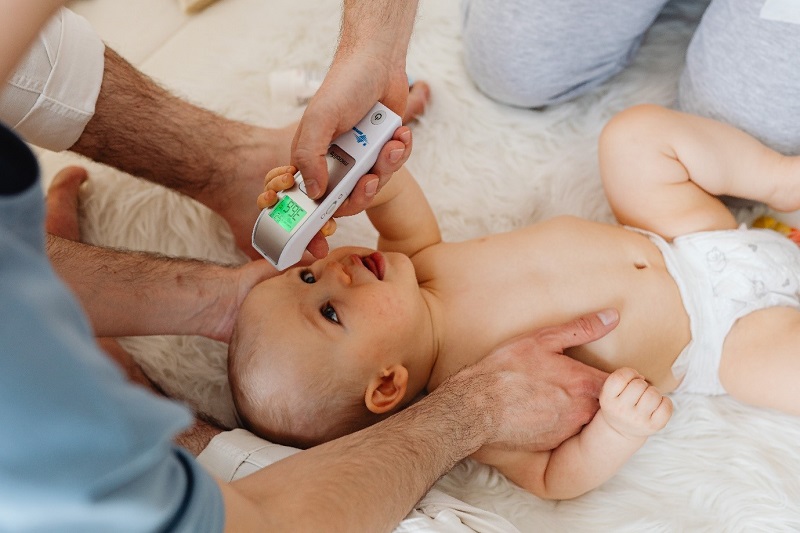The first two years of a human’s life are the most critical when it comes to health and brain development. Infants and toddlers experience several health problems as they build their immunity and prepare their bodies for later years. While some infants are born with congenital disorders and health issues, others develop them due to medical negligence. Mishandling during labor or bacterial or viral infections later in life can cause serious problems. This article sheds light on the ten most common health problems in young children.
Indicators of Good Health in Infants and Toddlers
The first few weeks of an infant give you a clear indication of their sleep-wake patterns, environmental sensitivity, different crying tones, and so on. Look for the following indicators to ensure your child is on the right track of development:
- The child is alert and lively.
- They are on or just below the ideal line of weight and height chart.
- They get uninterrupted sleep and a regular bowel movement.
- Their eyes and nails are not pale.
- They are achieving all age-appropriate developmental milestones.
Common Health Issues in Infants and Toddlers
Following are ten of the most common health problems in infants and toddlers:
1. Child Birth Injuries
Birth injuries and medical negligence are serious concerns. During the birth process, a baby may suffer physical, spinal cord injury, or brain damage resulting in serious health issues. While a child quickly recovers from most birth injuries, brain or spinal cord damage results in life-long cerebral palsy and impairment. There are many types of cerebral palsy, most of which causes a lifetime physical impairment. Visit cerebralpalsyguide.com for more information on cerebral palsy, its types, diagnosis, treatment, and management.
2. Prolonged Neonatal Jaundice
Neonatal jaundice is one of the most common health issues among newborns. Newborns are at a high risk of developing neonatal jaundice within 24 hours of birth. Neonatal jaundice occurs when an excess of bilirubin is found in the baby’s blood. It causes infants to develop yellowish pigmentation on their skin and in the sclera.
Neonatal jaundice is a common health issue, and 6 out of every 10 newborns develop it before the 37th week of pregnancy. It usually disappears on its own within 3 weeks of a child’s birth. The baby’s liver takes time to mature, but after it does, it removes the excess bilirubin that causes jaundice. Prolonged neonatal jaundice indicates an underlying health issue. Jaundice can worsen and cause acute bilirubin encephalopathy, cerebral palsy, and kernicterus. The good news is that prolonged neonatal jaundice is easily treatable. Consult your doctor if your child’s jaundice persists for more than 3 weeks.
3. Colic
Infants between two weeks and four months are typically diagnosed with colic. It is characterized by periods of intense crying at certain times of the day, lasting at least two to three hours. Colic may occur every day or more than three times a week. The underlying causes of colic are still unknown. Still, it’s a common notion that colic is caused by lactose intolerance, indigestion, or the baby not burping after each feed. A change in milk formula, certain anti-colic drops, and gentle pats on the back during a colic episode can soothe a crying baby and ease symptoms. Feed your baby slowly while lying down to prevent colic episodes.
4. Cold and Flu
Infants have an immature immune system with limited antibodies to fight the common cold and flu. An infant and toddler’s immune system naturally becomes more effective once exposed to less vicious flu viruses. This is why infants and toddlers frequently catch a cold and flu, sometimes as frequently as 8 to 10 times a year before age 2. The viral flu or cold typically goes away within 7 days. Timely vaccination can help children develop immunity to common flu viruses. If they get infected, pediatricians only recommend over-the-counter medication for pain relief.
5. Fever and Vaccination Side-Effects
Infants and toddlers receive most of the immunity shots for numerous diseases. Fever is a common side effect of immunization which may be accompanied by swelling and pain at the site of vaccination. Pediatricians recommend painkillers to relieve fever and pain. Children develop fever frequently during the first few years. It shouldn’t be much of a concern if the fever is below 38.5°C or 102°F. However, high-grade or persistent low-grade fever indicates a severe illness, and parents should immediately consult a doctor.
6. Frequent Throw-Ups
When babies feed, they may vomit or spit out the milk they drink. It is why mothers tend to burp their babies. However, vomiting and frequent throw-up may be a problem. If you notice a greenish color in the baby’s vomit that is not going away or if they become dehydrated after throwing up. Visit a pediatrician if your child vomits right after being fed or if the vomit has a green color and excessive odor. Underlying infection or digestive problem could cause frequent vomiting and spitting up of milk if lactose and breast milk intolerance are present.
7. Skin Issues
It is common for babies to get skin problems such as dry keratinous skin, eczema, diaper rash, and cradle cap. A prolonged dry spell and excessive clothing can cause issues like dry, flaky skin and eczema. Suppose you don’t change your baby’s diaper frequently. In that case, they may get diaper rash due to prolonged wet and acidic or soiled diapers. Sometimes, diaper rash occurs due to an allergic reaction to some of the content of the diaper, including lining, colors, and elastic material. You should change your baby’s diaper at least three times daily and use a rash cream at each diaper change. Keep a close check on the child’s excretions and change soiled diapers immediately.
Cradle cap is another common skin issue in infants and toddlers caused by excess oil produced by the skin glands surrounding hair follicles. Symptoms include scales or thick crusts on the baby’s scalp, skin flakes, redness, and oily or dry skin with yellow or white scales. A cradle cap usually resolves on its own within a few months. Still, you must consult a pediatrician or skin doctor if it doesn’t. Wash your baby’s hair with mild shampoo daily to remove the scales, dry up the oily patches, and avoid using caps.
8. Diarrhea (seasonal, new diet, non-specific diarrhea)
In infants, diarrhea is a common reaction to certain medications and infections. Children also develop diarrhea when you introduce a new food component to their diet. Diarrhea can be seasonal and even non-specific sometimes. If your baby has diarrhea, keep them hydrated and add more minerals to a simple diet. Keep monitoring their stools and consult your doctor if you notice anything peculiar. Constipation may also result as a consequence of prolonged diarrhea. Consult a doctor if your child has had no bowel movement for three days or more.
9. Oral Candidiasis
Oral candidiasis or oral thrush is among the most common bacterial or yeast infections in infants and children. White spots and patches that look like cottage cheese appear in and around a child’s mouth and tongue. Oral thrush usually goes away on its own within a few weeks. However, severe infections may make feeding difficult and require anti-fungal medications and ointments. To prevent oral thrush, feed your baby in sterilized bottles or clean your nipples gently if you are breastfeeding your child.
10. Cough/ Tonsillitis
Coughing is a common health issue among infants and toddlers. In most cases, infants cough due to a fast flow of milk during a feed. Continuously coughing and gagging at night can indicate a respiratory problem, and persistent coughing or gagging may be due to lung or digestive system problems.
In rare cases, if your child’s tonsils become inflamed and swollen by bacteria in their mouth, this condition can lead to an infection called tonsillitis. It is an acute group A streptococcal disease. If your child suffers from recurrent tonsillitis despite antibiotic treatment, tonsillectomy or removal of tonsils may be necessary.
Final Thoughts
Whether it’s a neonatal infection or an infant or toddler health issue, many of these problems often disappear without a particular treatment as your child’s immunity becomes stronger and organs mature. However, it’s every parent’s responsibility to keep a close check on the child’s development and adopt extreme caution in providing care. Get your child regularly examined by a qualified pediatrician, go for immunizations on time, and maintain your child’s hygiene.





